A breast lump could be: Fibroadenoma
The most common type of breast growth is a fibroadenoma—a fancy word that really just means lump, according to Jeanne Conry, MD, ob-gyn and chair of The National Preconception Health and Health Care Initiate. The solid, non-cancerous tumors are most often found inside the breast during puberty, young adulthood, and especially pregnancy. Fibroadenomas generally don’t come with any other symptoms and aren’t worrisome on their own, Conry says. However any palpable lump needs an evaluation, so you should always get it checked out by your doctor. “Depending on the situation, she may need nothing more than reassurance or further evaluation in the form of mammogram or ultrasound,” she says. These are health secrets your breasts wish they could tell you.
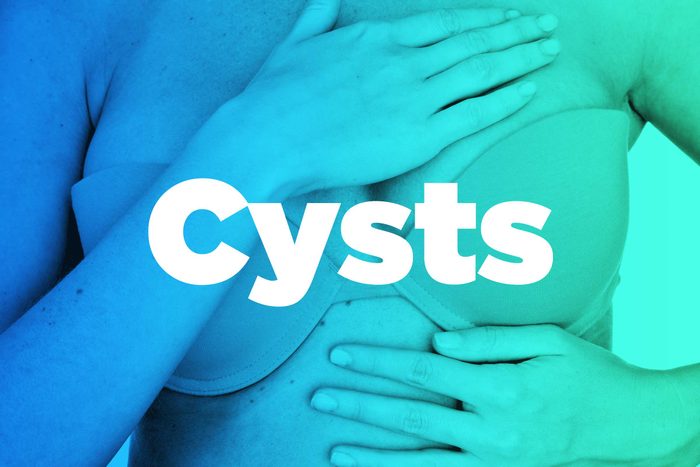
A breast lump could be: A cyst
Small fluid-filled sacs called cysts may appear in one or both breasts and may feel like a hard or squishy lump, Dr. Conry says. They’re benign too. They’re most common in premenopausal women but can occur at any time in a woman’s life. (Fun fact: You can also get “milk cysts,” which grow in your mammary ducts and are filled with milk.) On their own cysts usually don’t cause any symptoms or need treatment. However, if they get large enough that they cause pain, discomfort, or disfigurement, they can be drained or surgically removed.
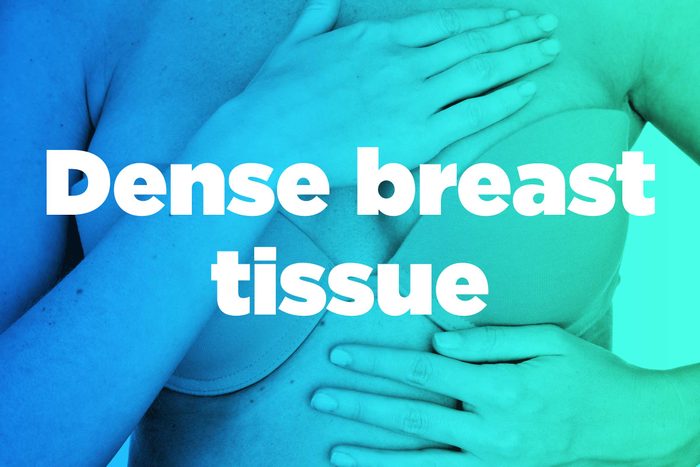
A breast lump could be: Dense breast tissue
File this under things that more women need to hear: Your breast tissue may just be lumpy. Just like we all have different breast sizes or nipple colors, we also have unique tissue and nearly half of women have breasts that are naturally more dense and/or lumpy feeling, Dr. Conry says. Dense breast tissue simply means that you have less fat and more connective and glandular tissue. But while naturally dense or lumpy breast tissue isn’t a problem by itself, it can increase your risk of breast cancer and make screenings a little more difficult so it’s important to stay on top of your check-ups and make sure to see your doctor if you notice any changes in your breasts. Don’t fall for these breast cancer myths.
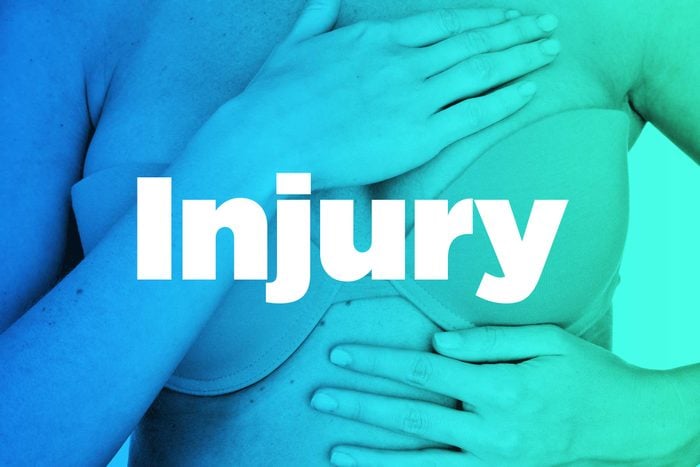
A breast lump could be: An injury
Did you get hit in the chest with a softball, were you in a car accident, or did you recently suffer some other type of trauma to your chest? Just like any other tissue, breasts can bruise or swell when they’re injured and sometimes this may feel like a hard knot or lump. “This can be seen and felt as a lump within the breast tissue that is typically very tender to touch,” explains Taraneh Shirazian, MD, OB/GYN, founder and Mom in Chief of Mommy Matters. “It also can result in bruising to the skin.” See your doctor if there’s a lot of pain with it or if it doesn’t resolve on its own within a week or two. Don’t miss these other surprising reasons you might experience breast tenderness.
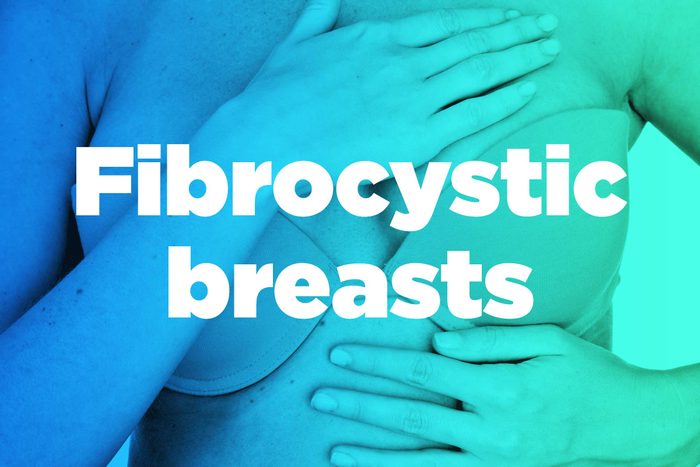
A breast lump could be: Fibrocystic breasts
Fibrocystic breasts are made of up of nodular or granular tissue that feels ropey, lumpy, or fibrous. “They are benign changes to the breast tissue that may result in pain and may feel ‘lumpy’ to the touch,” explains Dr. Shirazian. “These changes may appear as density on breast mammography and ultrasound.” Usually, the condition doesn’t cause symptoms but some women do experience pain and tenderness with it, especially during the latter part of their menstrual cycle.
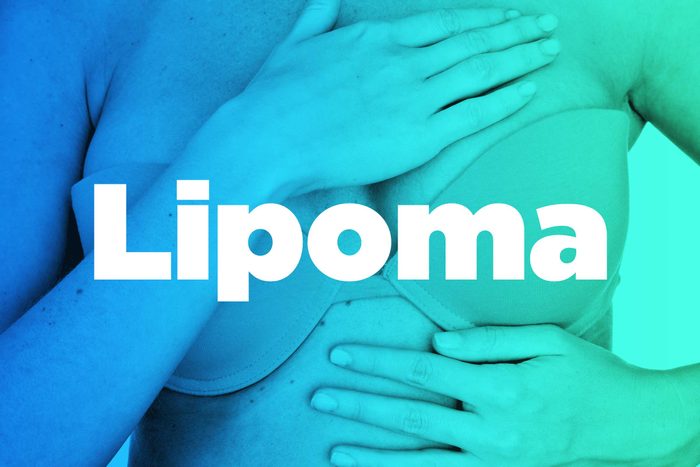
A breast lump could be: Lipoma
Lipomas are slow-growing fatty lumps that sit right under your skin. They are benign but don’t go away by themselves and may need surgical removal if painful or bothersome, according to Dr. Shirazian. They’re most common in middle age, and you may get several at a time. Like other benign growths, these aren’t cancerous, generally don’t cause other symptoms, and don’t require treatment. If they’re bugging you (they can be unsightly), they can be surgically removed.
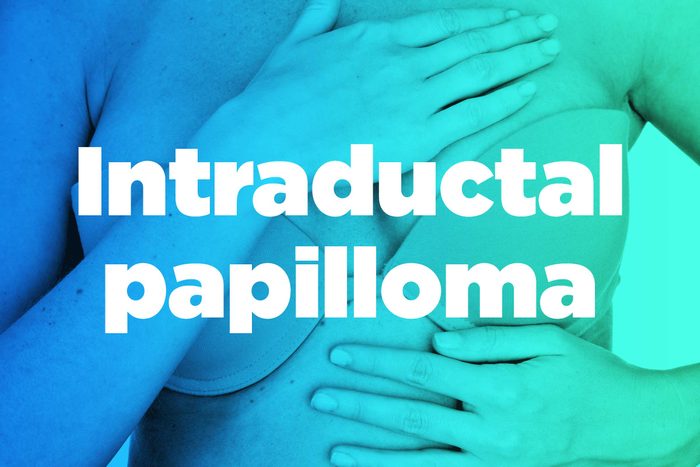
A breast lump could be: Intraductal papilloma
There’s no easy to say this: You can get warts in your breast. “A papilloma is a benign growth that occurs in the milk duct and is usually asymptomatic, but can present as a clear or bloody nipple discharge or discovered on a mammogram as a small nodule,” explains Richard Reitherman, MD, PhD, medical director of breast imaging at MemorialCare Breast Center at Orange Coast Medical Center in Fountain Valley, California. “A papilloma can contain abnormal, but non-cancerous, cells called ‘atypia’ or in some cases an intra-cystic papillary carcinoma.” While they’re not cancerous themselves, having multiple papillomas can increase your risk of breast cancer so be sure to have it regularly evaluated by your doctor. Next: Did you know that science has determined the exact amount of alcohol that increases breast cancer risk?
